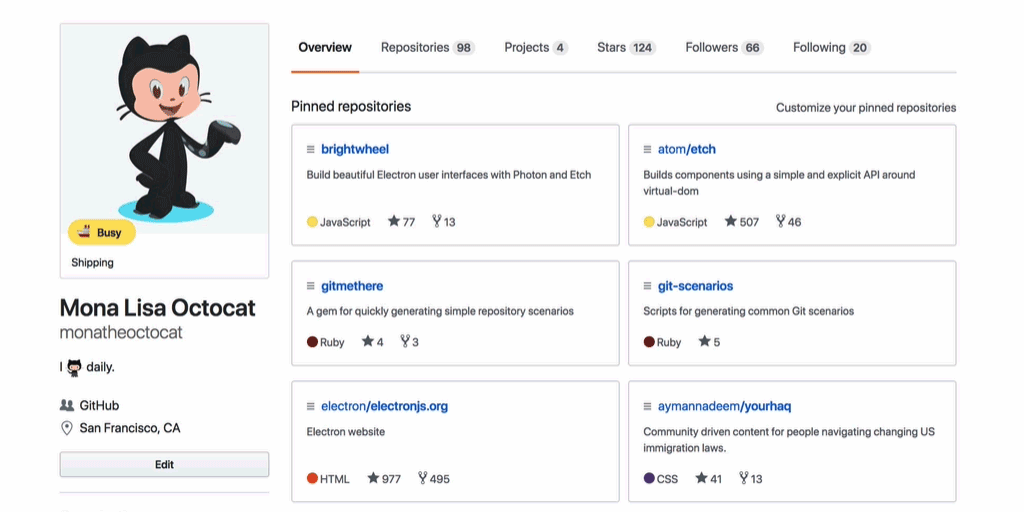On GitHub itself, you cannot group your repos by "folder", unless you create organizations.
See SublimeText, for instance, as a group of all sublimeText packages repos.
But that won't support a nested folder organization. For now (June 2017), that only supports a nested team organization structure.
Update Aug. 2020: the README project allows you to add a profile page... in which you can list and organize your repositories any way you want. But that is a manual process (editing the page).
Update February 2019: you now have the concept of project:
See "User owned projects—your personal workspace "
You can also link up to 5 repositories to your project board. Linking repositories will limit the scope of the search to those linked repositories, so you can quickly narrow down any new issues you haven’t yet added to the project board

GitHub also supports tags now (in the form of topics).
Original answers 2012:
Another solution is for you to define repositories which reference other repos, declared as submodules.
That way, when you are cloning one of the repos (which references other repos), called "parent repos", they will be cloned in their own directory, with a sub-directory per submodules.
It won't be visually apparent on your GitHub account itself (as it will still contains a large list of repos, even larger with the parent repos), but by cloning one parent repo, you will get back all its associated submodules in it.
The issue 302 mentioned in the comments by AnneTheAgile in 2014 just references now (Nov. 2018) tbnorth/github_repo_tags
The small python program in this repository uses the GitHub API to get a list of your repos. and add their name, description, and URL, to a new repo., by default called repo_tags. Initially each “issue” is tagged unclassified, but you can tag them as you please, using regular issue tagging.
When re-run, repo_tags.py only creates issues for repos. that weren't already covered by an issue.
